Medical Diagnosis
ICD-10: Understanding Hearing Loss Coding
Lose yourself in the symphony of ICD-10 coding for hearing loss, where precision leads to harmonious patient care outcomes.
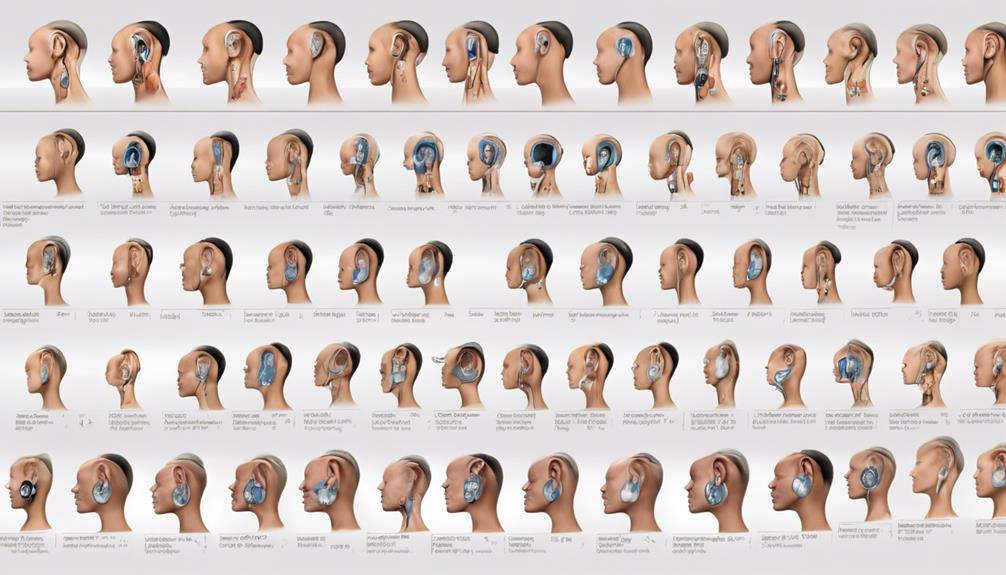
Understanding the intricate realm of ICD-10 coding for hearing loss is akin to deciphering a intricate musical piece; each note must be placed correctly for harmony to be achieved. However, decoding the intricacies of these codes is just the beginning.
Understanding how these codes impact patient care and reimbursement is a critical piece of the puzzle. Let's explore how mastering the art of hearing loss coding can orchestrate a symphony of accurate documentation and improved healthcare outcomes.
Key Takeaways
- Accurate coding of hearing loss aids in proper reimbursement and quality reporting.
- ICD-10 categorizes hearing loss with specific codes for unilateral and bilateral conditions.
- Coding guidelines stress differentiation, laterality, and precision for effective reporting.
- Familiarity with common codes like H90.0 and H91.90 ensures precise diagnosis and billing.
Importance of Accurate Coding
Accurate coding for hearing loss is imperative for healthcare providers to ensure proper reimbursement and prevent claim denials. When documenting hearing loss, specifying the type and laterality is essential for precise coding using ICD-10-CM. This detailed documentation not only aids in accurate coding but also supports value-based care initiatives and quality reporting. Healthcare providers rely on correct coding to track patient outcomes and treatment effectiveness effectively.
Proper coding for hearing loss isn't only a matter of reimbursement but also a means of demonstrating the quality of care provided. By capturing the specifics of the hearing loss condition in the documentation, healthcare providers can paint a comprehensive picture that influences reimbursement and care decisions. Medical billing and coding companies play a vital role in assisting healthcare providers in accurately coding for hearing loss, ensuring that the services rendered are appropriately reflected in the billing process.
Overview of ICD-10 System

Navigating the intricate landscape of the ICD-10 system requires a thorough understanding of its classification structure and coding conventions. In the ICD-10-CM, disorders of the ear, including hearing loss, are categorized under codes H90-H94. New codes introduced in 2017 now allow for specific coding of unilateral (left or right) and bilateral hearing loss, with additional codes available for unspecified laterality.
Notably, sudden idiopathic hearing loss falls under subcategory H91.2, while presbycusis, or age-related hearing loss, is coded under H91.1. When documenting hearing loss for coding purposes, it's crucial to specify the type of hearing loss and laterality to ensure accurate reporting. This precision in coding is essential for quality reporting and value-based reimbursement, emphasizing the significance of accurate coding in medical billing processes.
Understanding these nuances within the ICD-10 system is fundamental for healthcare providers striving for excellence in their coding practices.
Coding Guidelines for Hearing Loss

Our exploration of hearing loss coding now shifts to the detailed guidelines that dictate the accurate classification and reporting of various types and presentations of this auditory impairment within the ICD-10 system.
When dealing with hearing loss coding, it's crucial to adhere to specific guidelines to ensure precise reporting and billing. Here are some key points to consider:
- Differentiation of Types: Proper identification of sensorineural and conductive hearing loss is essential for selecting the correct ICD-10 codes.
- Consideration of Bilateral Involvement: Codes for unilateral and bilateral hearing loss allow for accurate diagnosis and appropriate treatment planning.
- Emphasis on Laterality: New codes introduced in 2017 enable the documentation of different types of hearing loss in each ear, aiding in precise reporting.
- Impact on Reimbursement: Accurate coding is pivotal for value-based reimbursement, emphasizing the significance of following coding guidelines meticulously.
Commonly Used Hearing Loss Codes
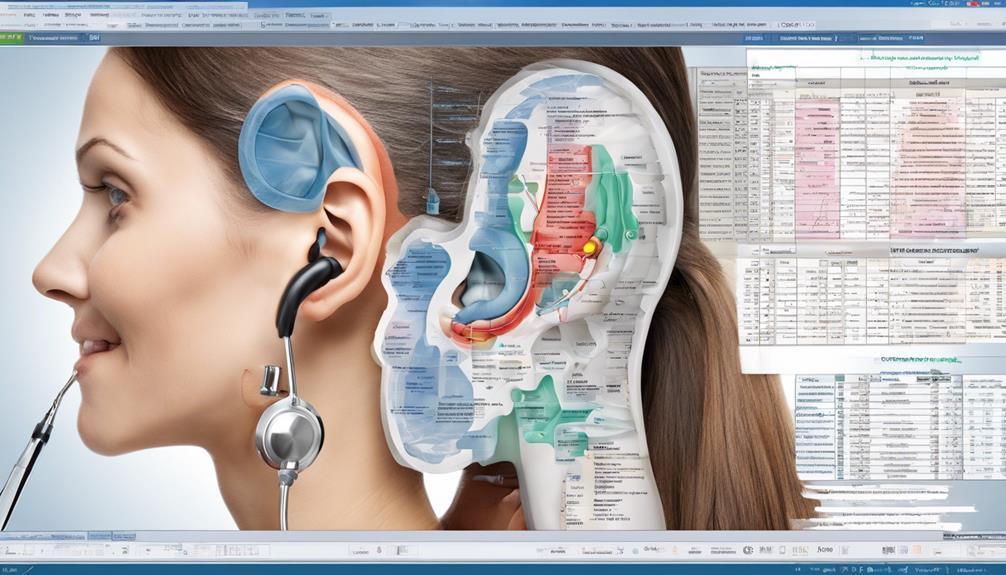
Exploring the realm of hearing loss coding reveals a set of commonly used codes that play a crucial role in accurate diagnosis and treatment planning. In the realm of Hearing Loss ICD Codes, H90.0 to H90.4 are significant for capturing both conductive and sensorineural hearing loss.
For instance, H90.0 represents bilateral conductive hearing loss, while H90.4 is assigned to unilateral sensorineural hearing loss. When encountering unspecified hearing loss in an unspecified ear, healthcare professionals turn to H91.90.
Commonly used codes like H90.0 for bilateral conductive loss and H90.3 for bilateral sensorineural loss aid in precise diagnosis and billing processes. Furthermore, specific codes such as H91.2 for sudden idiopathic hearing loss and H91.1 for presbycusis are instrumental in accurately documenting different types of hearing impairments.
Familiarity with these specific hearing loss codes is essential for effective ICD-10 coding, ensuring proper diagnosis and appropriate billing procedures.
Billing and Reimbursement Considerations
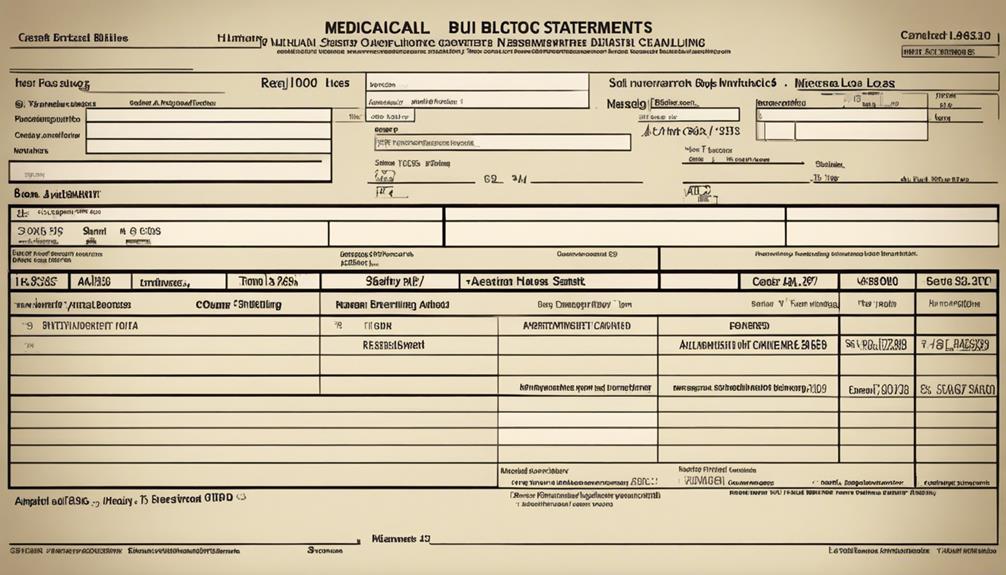
Understanding the intricacies of billing and reimbursement considerations in cases of cerumen impaction and hearing loss is vital for accurate coding and insurance payments. When dealing with these issues, providers must pay close attention to Dx codes like H91.90 for unspecified hearing loss to ensure proper reimbursement.
Additionally, denials related to ABR codes 92585/92586 can be minimized through consistent and accurate Dx coding practices. Coding for bilateral diagnoses in hearing loss cases demands a thorough understanding of the patient's condition to report it correctly.
The CANPC Anesthesiology Coding Essentials offer invaluable guidance, particularly in cases involving general endotracheal anesthesia. By mastering anesthesia coding and staying up to date with ICD-10 guidelines, providers can navigate the complexities of billing and reimbursement with confidence and precision, ultimately ensuring optimal care for patients.
Frequently Asked Questions
What Is the ICD-10 Code for Impaired Hearing Loss?
The ICD-10 code for impaired hearing loss is H91.9. It encompasses unspecified hearing loss and unspecified ear conditions when the specific cause isn't known. This code is vital in accurately classifying hearing impairments.
However, it doesn't include issues like abnormal auditory perception or noise-induced hearing loss. Proper documentation is crucial to ensure precise coding and billing for impaired hearing loss.
What Does H90 3 in Hearing Loss Mean?
H90.3 in hearing loss means bilateral sensorineural impairment, signaling permanent inner ear or nerve damage. This code encompasses cases where both ears are affected, often due to aging, noise exposure, or medical conditions.
Accurate coding and documentation are vital for billing and treating sensorineural hearing loss. Proper understanding of H90.3 aids in providing effective care and support for individuals facing bilateral sensorineural hearing challenges.
What Is the ICD-10 Code for Hearing Loss in 2023?
The ICD-10 code for hearing loss in 2023 is crucial for accurate medical billing and coding. It allows healthcare providers to document the type and laterality of hearing loss effectively. Proper documentation ensures correct reporting and treatment.
Understanding the correct ICD-10 code streamlines the billing process, leading to improved patient care and accurate reimbursement. It's essential to stay updated on the latest coding guidelines to provide quality healthcare services.
What Is the ICD-10 Code for Sensorineural Hearing Loss of Both Ears?
We use the ICD-10 code H90.3 for bilateral sensorineural hearing loss, indicating impairment in both ears due to inner ear or auditory nerve damage.
Accurate coding documenting the type and laterality of the hearing loss is crucial for effective communication among healthcare providers and precise billing.
Proper coding ensures services are billed correctly.
Conclusion
In conclusion, accurate ICD-10 coding for hearing loss is vital for proper diagnosis and treatment.
One interesting statistic to note is that approximately 15% of adults aged 18 and over report some trouble hearing. This highlights the prevalence of hearing impairments and the importance of utilizing specific codes like H90.0 and H90.3 to accurately document and address different types of hearing loss in healthcare settings.
Proper coding ensures effective care and reimbursement for patients with hearing impairments.
Medical Diagnosis
ICD Code for Bilateral Hearing Loss: A Comprehensive Guide
A comprehensive guide to ICD codes for bilateral hearing loss reveals essential insights that can transform healthcare practices – are you ready to explore?

Exploring the intricate world of ICD codes in medical coding can sometimes feel like a daunting task.
However, understanding the specific codes for conditions like bilateral hearing loss is crucial for accurate documentation and appropriate billing.
As we explore the nuances of ICD codes for bilateral hearing loss, we will uncover essential insights that can streamline coding processes and enhance patient care.
Stay tuned to discover how mastering these codes can significantly impact healthcare practices and patient outcomes.
Key Takeaways
- Accurate ICD-10 coding crucial for bilateral hearing loss diagnosis and treatment planning.
- Audiometry tests confirm bilateral hearing loss, influenced by various factors.
- Clear documentation specifying type and severity in each ear aids in coding.
- Proper coding differentiation between unilateral and bilateral types enhances communication and billing accuracy.
ICD-10-CM Codes for Bilateral Hearing Loss
What're the specific ICD-10-CM codes used to classify bilateral hearing loss accurately?
When it comes to coding bilateral hearing loss in the ICD-10 system, two primary codes are essential for proper classification. Bilateral conductive hearing loss is designated by the specific code H90.0, while bilateral sensorineural hearing loss is identified by the code H90.3.
It's crucial to differentiate between these two types of hearing loss as they require distinct treatment approaches and have varying implications for patients. Additionally, the ICD-10-CM also includes specific codes for unilateral conductive (H90.1) and sensorineural (H90.4) hearing loss, enabling detailed classification based on the type and laterality of the condition.
Accurate medical billing and treatment planning heavily rely on correctly assigning these codes, ensuring that healthcare providers can deliver appropriate interventions tailored to the patient's specific bilateral hearing loss profile. Proper documentation using these ICD-10 codes is vital for maintaining the quality of care and facilitating effective communication among healthcare professionals.
Diagnosing Bilateral Hearing Loss

When diagnosing bilateral hearing loss, audiometry tests are commonly utilized to confirm the presence and extent of the condition in both ears. These tests measure the ability to hear sounds at various frequencies and intensities, providing valuable information for diagnosis and treatment planning.
To delve deeper into diagnosing bilateral hearing loss, one must consider the following:
- Differentiating Causes: Understanding the various factors that could contribute to bilateral hearing loss, such as aging, noise exposure, infections, genetics, and trauma.
- Treatment Options: Exploring the available interventions for managing bilateral hearing loss, including hearing aids, cochlear implants, and surgical procedures.
- Importance of Accurate Coding: Highlighting the significance of using the correct ICD-10-CM code, like H90.3 for bilateral sensorineural hearing loss, for precise billing and effective treatment strategies.
- Role of Audiologists: Recognizing the crucial role audiologists play in diagnosing and treating bilateral hearing loss through comprehensive evaluations and customized care plans.
Classification of Hearing Loss Codes

In classifying hearing loss codes, the differentiation is based on the type (conductive, sensorineural) and laterality (bilateral, unilateral). Proper coding is essential for accurate diagnosis and treatment. ICD-10 codes specifically identify bilateral conductive, unilateral sensorineural, and other types of hearing loss.
Bilateral codes point to impairment in both ears, while unilateral codes indicate hearing loss in one ear. Understanding these distinctions is crucial for precise communication among healthcare providers and correct billing procedures. Accurate coding of bilateral hearing loss ensures that the appropriate interventions are implemented for patients experiencing hearing impairments in both ears.
Documenting Bilateral Hearing Loss

Proper documentation of bilateral hearing loss necessitates a detailed description of the type and severity of impairment in both ears. When documenting bilateral hearing loss, healthcare professionals should ensure accuracy in specifying the nature of the condition to facilitate appropriate diagnosis and treatment. Here are some key points to consider:
- Specify the type of hearing loss (e.g., sensorineural, conductive) in each ear.
- Detail the severity of impairment separately for the left and right ears.
- Use the correct ICD-10 code, H90.3, for bilateral sensorineural hearing loss.
- Clearly differentiate between unilateral and bilateral hearing loss to aid in accurate coding and billing processes.
Accurate documentation plays a crucial role in ensuring that individuals with bilateral hearing loss receive the necessary care and support. By providing detailed and precise information about the impairment in both ears, healthcare professionals contribute to effective treatment planning and improved quality of life for patients.
Coding Tips for Healthcare Professionals

To effectively assign appropriate ICD-10 codes for bilateral hearing loss, healthcare professionals must pay close attention to specific coding tips. When documenting bilateral hearing loss, distinguishing between sensorineural (H90.3) and conductive (H90.0) types is crucial for accurate coding and billing processes. Proper documentation outlining the type of hearing loss in each ear ensures precise ICD-10 code selection. Healthcare professionals should understand that bilateral hearing loss impacts both ears, necessitating distinct coding for precise medical billing.
Consulting coding guidelines is essential to guarantee the correct sequencing of ICD-10 codes for bilateral hearing loss cases. By following these guidelines, healthcare professionals can accurately capture the nature of the patient's hearing impairment and facilitate efficient coding and billing procedures. Accurate documentation not only supports appropriate code selection but also ensures clarity in conveying the specifics of the patient's condition for billing purposes. Adhering to these coding tips is fundamental in providing comprehensive care to individuals with bilateral hearing loss.
Frequently Asked Questions
What Is the ICD-10 Code for Bilateral Hearing Loss?
We use the ICD-10 code H90.3 for bilateral hearing loss, indicating sensorineural impairment in both ears.
Accurate coding is crucial for medical billing and record-keeping. Understanding this code aids in managing cases effectively.
What Is the ICD-10 Code for Bilateral Hearing Loss in 2023?
In 2023, the ICD-10 code for bilateral hearing loss remains H90.3. This code signifies impairment in both ears due to sensorineural issues. It's vital to specify the type and laterality of the hearing loss for accurate medical coding.
One interesting fact: as of 2020, an estimated 466 million people worldwide are affected by disabling hearing loss, underlining the importance of precise coding for proper diagnosis and treatment.
What Is the ICD-10 Code for R48.8?
We use the ICD-10 code R48.8 to classify specific symptoms and signs related to cognitive functions and awareness. This code falls within the R00-R99 range for symptoms and signs not classified elsewhere.
It's crucial for pinpointing cognitive or awareness-related symptoms in medical records where a more specific code isn't available. Proper application of R48.8 ensures accurate coding and billing for conditions affecting cognitive functions and awareness.
What Is the ICD-10 Code for Z46 1?
Sure, the ICD-10 code Z46.1 is used for encounters related to fitting and adjustment of external hearing aid devices.
It's crucial to use the correct code to reflect the reason for the encounter accurately.
Z46.1 is specifically for encounters related to hearing aids only, excluding other hearing device or procedure encounters.
Proper documentation and coding with Z46.1 ensure precise billing and tracking of hearing aid services.
Conclusion
In conclusion, proper documentation and accurate coding of bilateral hearing loss are crucial for effective patient care and billing processes.
As the saying goes, 'An ounce of prevention is worth a pound of cure.'
By following the guidelines outlined in this comprehensive guide, healthcare professionals can ensure that individuals with hearing loss receive timely interventions and support, ultimately improving their quality of life and overall well-being.
Medical Diagnosis
ICD Guide: Understanding Hearing Loss Unspecified Classification
Hone your understanding of hearing loss classifications with the ICD Guide and uncover how it impacts patient care and reimbursement – a crucial insight awaits!
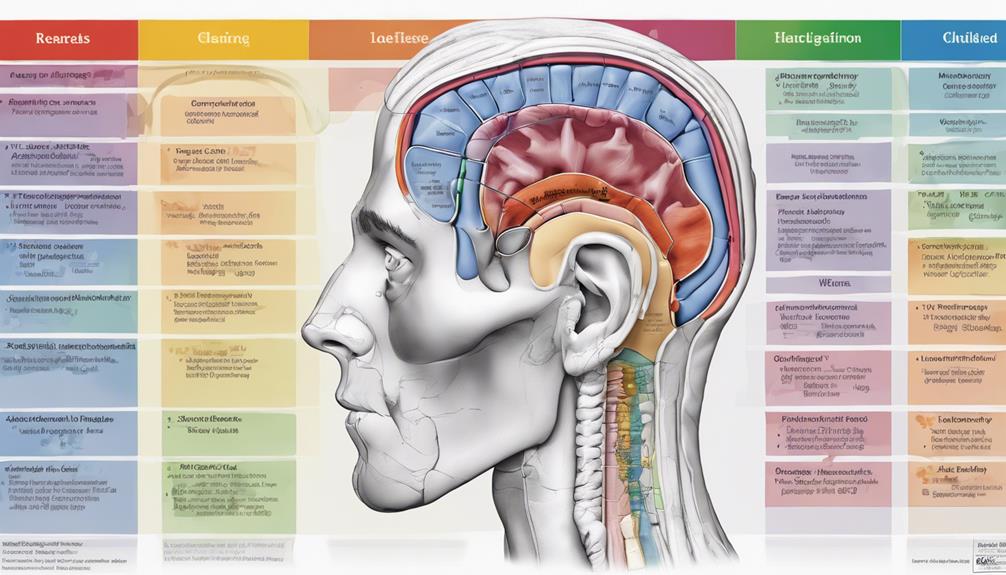
As healthcare providers, we are well aware of the important role that precise coding plays in the diagnosis of hearing loss. However, do we truly grasp the nuances of the Unspecified Classification in the ICD Guide? Understanding these classifications in depth can have a significant impact on patient care and reimbursement processes.
Exploring the depths of the ICD Guide reveals not just coding rules but also sheds light on the broader implications for clinical decision-making and treatment strategies. Let's unravel the layers of complexity together and uncover the hidden insights waiting to be discovered in the realm of hearing loss classification.
Key Takeaways
- Utilize ICD-10-CM code H91.90 for unspecified hearing loss categorization.
- Early identification crucial for appropriate interventions in hearing impairments.
- Avoid prolonged use of unspecified codes for accurate treatment.
- Comprehensive assessment through various tools enhances outcomes in hearing loss management.
ICD Classification for Hearing Loss
Understanding hearing loss classification begins with the utilization of the ICD-10-CM code H91.90 for unspecified hearing loss in an unspecified ear. This code serves as a foundational tool for categorizing hearing impairments and plays a crucial role in guiding healthcare professionals towards appropriate interventions.
When it comes to newborn screening, early identification of hearing issues is paramount. Factors such as auditory processing disorders and congenital cytomegalic virus (CMV) can contribute to sensorineural hearing loss. Through assessments like automated auditory brainstem response (ABR) testing, healthcare providers can detect hearing problems promptly, enabling early intervention strategies.
Unspecified Hearing Loss Categories

Utilizing the ICD-10-CM code H91.90 provides a foundational framework for categorizing unspecified hearing loss in clinical contexts. When dealing with unspecified hearing loss, it's crucial to understand the various categories that fall under this code.
Sensorineural hearing loss, a common type of hearing loss, is often included in unspecified classifications due to the lack of specific information on the condition. Mixed hearing loss, which involves a combination of sensorineural and conductive hearing loss, may also be classified under unspecified codes.
Various risk factors such as genetics, aging, exposure to loud noise, and certain medical conditions can contribute to unspecified hearing loss. Proper assessment through hearing screenings and tools like the Newborn Hearing Checklist is essential for identifying and addressing this condition.
Coding for Hearing Loss Diagnosis

When diagnosing hearing loss, accurate coding is crucial for proper billing and treatment planning. Here are some key points to consider when coding for hearing loss diagnosis:
- Specificity Matters: Different types of hearing loss, such as sensorineural hearing loss, require specific ICD-10-CM codes for precise diagnosis in each ear.
- Exclusion Criteria: Pay attention to Excludes1 notes under H91.90 to ensure you aren't coding conditions together that should be coded separately.
- Risk Factors Consideration: When coding for hearing loss, take into account risk factors alone, such as a family history of hereditary hearing loss or conditions like cleft palate.
- Diagnostic Tests: Ensure proper coding for hearing screening tests like the Newborn Hearing Checklist and diagnostic tests like otoacoustic emissions testing or automated auditory brainstem response tests, typically performed by an audiologist.
Understanding these coding principles and guidelines is essential for correct usage of ICD-10-CM codes in hearing loss diagnoses.
Understanding Hearing Loss in ICD
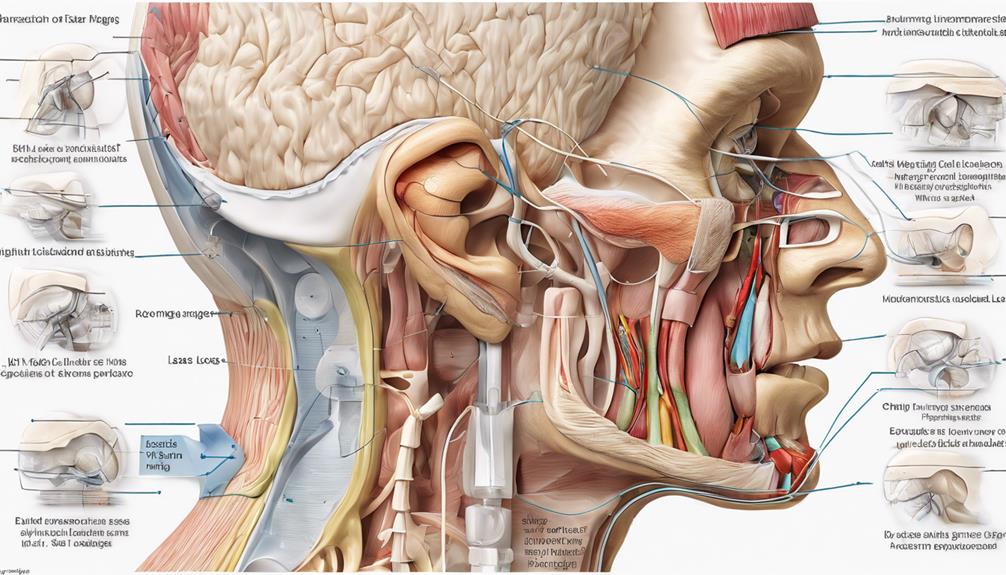
In the realm of ICD coding for hearing loss, precision in utilizing specific codes is paramount for accurate diagnosis and treatment planning.
When dealing with sensorineural hearing loss in an unspecified ear, the ICD-10-CM code H91.90 comes into play. Proper understanding of coding guidelines is crucial to ensure that conditions related to hearing loss are accurately documented.
It's important to note that this code excludes conditions like abnormal auditory perception, impacted cerumen, and noise-induced hearing loss. Billing and treatment planning rely heavily on the correct sequencing of codes and specificity in their application.
Additionally, special considerations must be made for bilateral diagnoses, as different guidelines exist for coding these instances. By adhering to the coding principles of ICD-10-CM, healthcare providers can enhance the accuracy of their documentation, leading to improved patient care and streamlined administrative processes.
Implications of Unspecified Classification

Unspecified classification in ICD-10-CM coding serves as a temporary solution for cases where specific details regarding hearing loss aren't available. When dealing with hearing loss, the implications of using unspecified codes like H91.90 can impact the care and outcomes for individuals. Here are four key points to consider:
- Move towards Specific Diagnoses: Strive to transition from unspecified classifications to detailed diagnoses through comprehensive evaluation and testing.
- Avoid Prolonged Use: Unspecified codes should only be utilized temporarily until a more precise diagnosis can be established to guide treatment effectively.
- Enhance Outcomes: Early intervention based on accurate diagnoses can significantly improve ultimate receptive language and overall development in individuals with hearing loss.
- Comprehensive Assessment: Utilize tools like the Newborn Hearing Checklist (AAP), hearing screening, screen for ocular disorders, and diagnostic ABR testing, especially in cases of prolonged NICU admission, to determine the most appropriate course of action promptly.
Frequently Asked Questions
What Is the ICD-10 Code for Hearing Loss Unspecified?
The ICD-10 code for hearing loss unspecified is H91.90. It's crucial to understand this code for accurate classification. Exclusions like abnormal auditory perception and noise-induced hearing loss are important to note. Proper coding ensures correct reimbursement and avoids errors.
When billing speech therapy, pairing H91.90 with diagnosis code F80.4 may be relevant. Following chapter-specific guidelines is essential for precise classification and proper documentation.
What Are the Classification of Hearing Loss?
Hearing loss can be categorized into sensorineural, conductive, and mixed types based on the affected part of the auditory system. Sensorineural involves inner ear or nerve damage, conductive occurs when sound waves can't reach the inner ear due to blockages, and mixed is a combination of both.
Proper classification is crucial for accurate diagnosis and treatment. Understanding these distinctions helps in providing effective management strategies tailored to the specific type of hearing loss.
What Is the Difference Between Other and Unspecified in Icd-10?
When coding in ICD-10, it's important to differentiate between 'Other' and 'Unspecified' codes. 'Other' codes indicate a known condition without a specific code, while 'Unspecified' is used when details are lacking for a more specific code. Selecting the correct one is crucial for accurate diagnosis and billing.
'Other' implies sufficient documentation but no specific code, while 'Unspecified' signifies insufficient information. Proper coding ensures precise reporting and billing.
Is Cookie Bite Hearing Loss a Disability?
Cookie bite hearing loss can impact communication but may not always qualify as a disability. Despite challenges in understanding speech, individuals with this condition navigate daily life.
Treatment options like hearing aids can improve hearing abilities. Working with audiologists and healthcare providers is crucial for effective management.
It's essential to address communication difficulties and optimize speech understanding in various environments.
Conclusion
In conclusion, mastering the ICD Guide for Understanding Hearing Loss Unspecified Classification is essential for accurate coding and treatment of patients with hearing disorders. By following the detailed coding principles and recommendations outlined in the guide, healthcare providers can ensure proper diagnosis, billing, and intervention for individuals with sensorineural hearing loss.
Remember, understanding these guidelines is as crucial as having ears to hear the world around us!
Medical Diagnosis
Mixed Hearing Loss: ICD Guide for Understanding Hearing Loss Types
Get ready to explore the intricate world of mixed hearing loss and uncover the hidden insights that could revolutionize patient care.

Our aim in examining the intricacies of mixed hearing loss is to clarify the factors that define this condition. Understanding the connection between sensorineural and conductive components can help unveil possible treatment methods and anticipate results.
By examining the nuances of coding classifications and diagnostic criteria, we can pave the way for more accurate assessments and tailored interventions.
But what lies beyond these classifications and definitions? What hidden insights await us in the realm of mixed hearing loss that could shape our understanding and improve patient care?
Key Takeaways
- Mixed hearing loss involves a combination of conductive and sensorineural impairments.
- Specific interventions are tailored based on the type of hearing loss (sensorineural, conductive).
- Diagnosis of mixed hearing loss requires audiometry testing for treatment planning.
- Treatment options include hearing aids, cochlear implants, and rehabilitation programs.
ICD-10-CM Coding for Mixed Hearing Loss
In identifying and coding for mixed hearing loss, we utilize ICD-10-CM code H90.6 to specify bilateral conductive and sensorineural impairment. This specific code falls under the Diseases of the ear and mastoid process chapter, aiding healthcare professionals in accurately documenting and billing for this condition. It's crucial to pay attention to Excludes1 notes related to H90.6, as they help differentiate mixed hearing loss from other similar conditions like noise-induced or sudden idiopathic hearing loss.
Proper documentation and coding are vital not only for billing purposes but also for treatment planning. Understanding the nuances of coding for mixed hearing loss allows healthcare providers to create tailored treatment strategies that address both the conductive and sensorineural components of the impairment. By using the appropriate ICD-10-CM code, we ensure that patients receive the necessary care and interventions to manage their bilateral hearing loss effectively.
Types of Hearing Impairments

Our exploration of hearing impairments delves into the various types that encompass the spectrum of auditory challenges individuals may experience. Hearing impairments can be classified into different categories such as sensorineural hearing loss, conductive hearing loss, auditory processing disorder, and mixed conductive and sensorineural hearing loss. Each type presents distinct challenges and requires specific interventions for management.
Sensorineural hearing loss affects the inner ear or auditory nerve and can be caused by aging, genetics, exposure to loud noise, or certain illnesses. On the other hand, conductive hearing loss occurs when sound waves can't reach the inner ear, often due to issues in the outer or middle ear. Diagnosis of hearing loss involves audiometry tests to determine the type and extent of impairment, which is crucial for developing a proper treatment plan.
Medical coding, including ICD-10-CM codes, plays a vital role in accurately documenting the type of hearing loss for billing purposes and treatment tracking. Treatment options may include hearing aids, cochlear implants, or surgical interventions depending on the specific needs of the individual.
Causes of Mixed Hearing Loss

Mixed hearing loss occurs when both conductive and sensorineural factors combine to impact auditory function in both ears. The causes of mixed hearing loss are varied and can include:
- Chronic ear infections: Persistent infections can lead to conductive hearing loss by blocking sound conduction through the ear.
- Otosclerosis: Abnormal bone growth in the middle ear can disrupt sound transmission, contributing to conductive hearing loss.
- Head trauma: Injuries to the head can damage the structures involved in hearing, causing a mix of conductive and sensorineural hearing loss.
- Exposure to loud noise: Prolonged exposure to loud sounds can damage the delicate hair cells in the inner ear, leading to sensorineural hearing loss.
Diagnosis of mixed hearing loss typically involves audiometric testing to evaluate the extent of both types of hearing loss. Treatment options may include hearing aids to amplify sound, surgical interventions to correct conductive issues, or other personalized approaches to address the specific components of mixed hearing loss.
Symptoms of Hearing Loss

What common signs indicate the presence of hearing loss? Symptoms of mixed hearing loss may manifest as difficulty understanding speech, ringing in the ears, and perceiving sounds as muffled or distorted. Individuals with mixed hearing loss often experience a combination of symptoms from both conductive and sensorineural hearing loss.
This can lead to challenges in various aspects of life, including communication, social interactions, and engaging in daily activities. Patients may struggle to follow conversations, especially in noisy environments, and may find it hard to hear high-frequency sounds clearly.
Recognizing these symptoms early is crucial for seeking proper diagnosis and management. Addressing mixed hearing loss promptly can help improve the quality of life for affected individuals, enhance communication abilities, and prevent further deterioration of hearing. Therefore, it's essential to consult with healthcare professionals for accurate diagnosis and appropriate management strategies tailored to each individual's specific needs.
Treatment Options for Mixed Hearing Loss

Exploring diverse treatment modalities for mixed hearing loss involves considering options such as hearing aids, cochlear implants, or bone conduction devices. When managing mixed hearing loss, various interventions and strategies can be utilized to address both the conductive and sensorineural components effectively.
Here are some key treatment options to consider:
- Hearing Aids: These devices can amplify sounds for individuals with residual hearing, improving overall auditory perception.
- Cochlear Implants: Suitable for severe to profound hearing loss, cochlear implants bypass damaged portions of the ear to directly stimulate the auditory nerve.
- Bone Conduction Devices: By transmitting sound through bone vibrations, these devices can benefit individuals with conductive hearing loss or single-sided deafness.
- Rehabilitation Programs: Engaging in auditory training and speech therapy can enhance communication skills and quality of life for those with mixed hearing loss.
Incorporating a multidisciplinary approach involving audiologists, otolaryngologists, and speech-language pathologists, along with regular monitoring and individualized treatment plans, is crucial for optimizing outcomes in managing mixed hearing loss effectively.
Frequently Asked Questions
What Is the ICD-10 Code for Mixed Hearing Loss?
The ICD-10 code for mixed hearing loss is H90.6, specifically indicating a combination of conductive and sensorineural hearing loss in both ears. It falls under Diseases of the ear and mastoid process.
The long descriptor for H90.6 is 'Mixed conductive and sensorineural hearing loss, bilateral.' Excludes1 notes clarify conditions that shouldn't be coded together, like deafness or noise-induced hearing loss.
Accurate use of H90.6 is crucial for billing, treatment, and tracking.
What Types of Hearing Loss Are Mixed?
When discussing the types of hearing loss that are mixed, it's important to note that mixed hearing loss is a combination of both conductive and sensorineural hearing loss in the same ear.
This means that individuals with mixed hearing loss experience issues with sound transmission through the outer or middle ear, as well as damage to the inner ear or auditory nerve.
Proper diagnosis and treatment are crucial in addressing this complex condition.
What Is the ICD-10 Code for Hearing Loss in Both Ears?
We've got the answer for you! The ICD-10 code for hearing loss in both ears is H90.6.
This code is specifically for mixed conductive and sensorineural hearing loss affecting both ears.
It falls under the Diseases of the ear and mastoid process chapter.
Accurate coding with H90.6 is essential for precise diagnosis and treatment planning.
Remember to pay attention to Excludes1 notes to ensure proper coding.
What Is the ICD 9 Code for Mixed Hearing Loss?
Let's clarify that the ICD-9 code for mixed hearing loss is 389.2. This code encompasses both conductive and sensorineural components, indicating a combination of hearing issues.
Accurate documentation of the type of hearing loss is crucial for proper coding, aiding in billing and treatment planning. Understanding this specific code streamlines healthcare processes and ensures comprehensive care for individuals with mixed hearing loss.
Conclusion
In conclusion, understanding the complexities of mixed hearing loss is crucial for accurate coding and effective treatment.
Just like a symphony requires all instruments to play in harmony, addressing both conductive and sensorineural components of hearing loss is essential for optimal outcomes.
By utilizing the ICD guide and staying informed on the latest coding changes, healthcare professionals can ensure comprehensive care for individuals with mixed hearing loss.
Let's keep striving for clear communication and improved quality of life.
-

 Navigating the VA System4 weeks ago
Navigating the VA System4 weeks agoVA Hearing Loss Rating Chart: Understanding Disability Compensation
-

 Therapies and Interventions3 months ago
Therapies and Interventions3 months ago10 Auditory Processing Goals for Effective Speech Therapy
-

 Living with Hearing Loss2 months ago
Living with Hearing Loss2 months ago10 Deaf-Friendly Dating Sites to Find Your Perfect Match
-

 Sign Language3 months ago
Sign Language3 months agoSign Language Emoji Translator: How to Communicate With Gestures
-

 Tinnitus1 month ago
Tinnitus1 month agoVA's Rating System for Tinnitus and Hearing Loss Explained
-

 Navigating the VA System3 weeks ago
Navigating the VA System3 weeks agoUnderstanding Bilateral Hearing Loss VA Rating Criteria
-

 Vetted1 month ago
Vetted1 month ago15 Best Oticon Hearing Aids to Improve Your Hearing in 2024
-

 Living with Hearing Loss2 months ago
Living with Hearing Loss2 months agoAn Introduction to Deaf Culture: Understanding the Basics



















